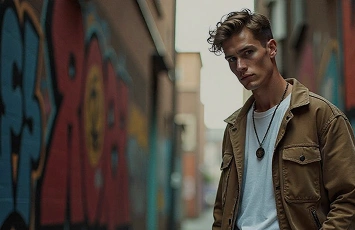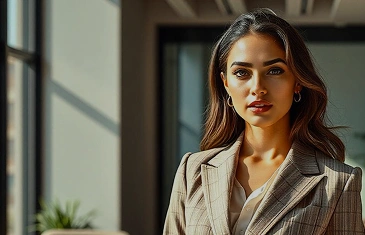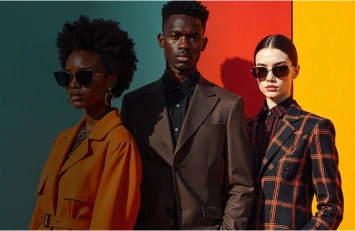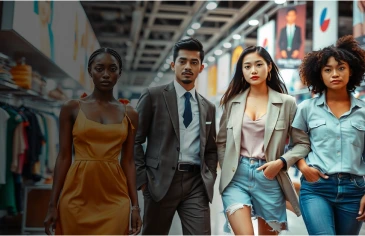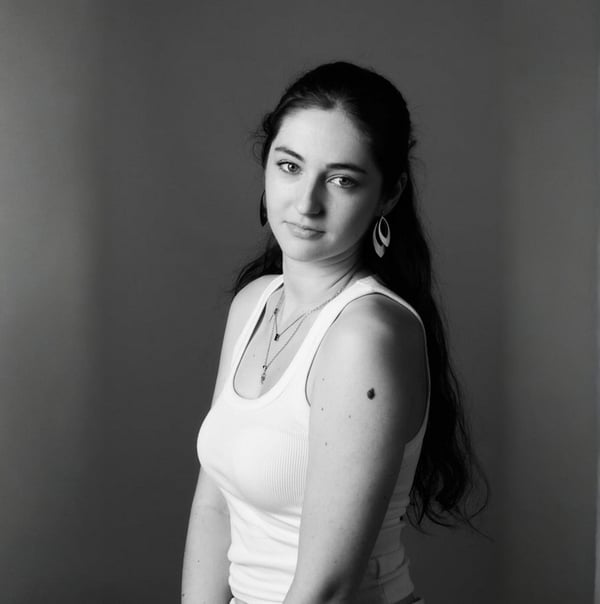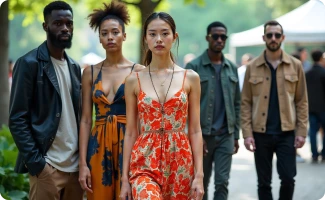
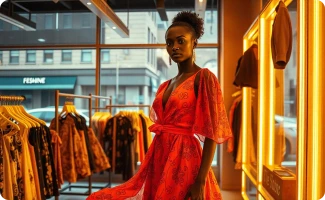
The Ultimate Guide to Upscaling Images Using AI Technology
Table of Contents
- The Growing Demand for High-Resolution Images
- Understanding Image Upscaling and Why AI is a Game-Changer
- How to Use AI to Upscale Images: Step-by-Step with Real Tools
- Real-World Applications and Modelia’s Role in Creative Enhancement
- Best Practices, SEO Impacts, and the Future of AI in Imaging
- The Ultimate User Guide to Virtual Try-On Features: How to Get the Best Experience
- Conclusion: Embrace the AI Advantage with Modelia
The Growing Demand for High-Resolution Images
In today's digital environment, high quality visuals are critical. Whether it's for e-commerce, marketing, design, or social media, resolution matters. Poor image quality can ruin user experience and diminish credibility. Traditional methods for enlarging images often lead to loss of detail, blurriness, or artifacts. This is where artificial intelligence steps in, redefining how to upscale images using ai.
Artificial intelligence uses complex algorithms to analyze and improve images by adding detail, correcting flaws, and enhancing resolution. Companies like Modelia have become pioneers in developing intelligent tools that help creators produce stunning visuals.
In this guide, we'll walk through the fundamentals, benefits, tools, and best practices of using AI to upscale images, with a spotlight on how Modelia is shaping this evolution.
Understanding Image Upscaling and Why AI is a Game-Changer
Image upscaling refers to the process of enlarging an image without degrading its visual quality. Traditionally, methods like bilinear or bicubic interpolation guessed new pixels based on surrounding ones. While useful in limited cases, they tend to blur fine details and textures. AI, however, introduces a paradigm shift.
Using technologies like Convolutional Neural Networks (CNNs) and Generative Adversarial Networks (GANs), AI can recreate the missing information in a photo. It doesn't just stretch pixels, it understands what should be there and intelligently fills in the gaps. AI models are trained on vast datasets, learning how high-resolution versions of similar images should look.
Key advantages include:
Sharper edges and cleaner textures
Reduced noise and compression artifacts
Better preservation of facial features, textiles, and complex backgrounds
Speed and automation that save hours of manual editing
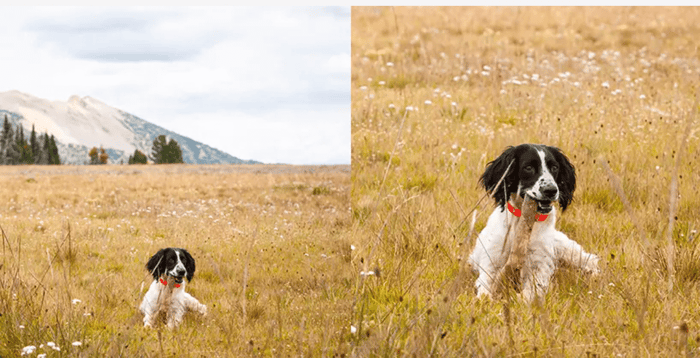
How to Use AI to Upscale Images: Step-by-Step with Real Tools
Upscaling with AI doesn’t require advanced technical skills. Most tools are designed with intuitive interfaces. Here’s how it generally works:
Step 1: Select an AI Upscaling Tool
Choose a trusted platform based on your needs. For creatives, Modelia is an excellent choice due to its design-oriented features and customization.
Step 2: Upload Your Image
Supported formats often include JPEG, PNG, and even RAW. Drag and drop your image into the platform.
Step 3: Choose Your Preferences
Set your upscaling ratio, commonly 2x or 4x. Some platforms offer additional options like noise reduction, sharpening, or style filters.
Step 4: Preview and Process
AI runs the enhancement process, reconstructing missing details. Most tools let you preview the difference before downloading.
Step 5: Download and Use
Once satisfied, save the high-resolution version. Use it for print, web, or social media without fearing quality loss.
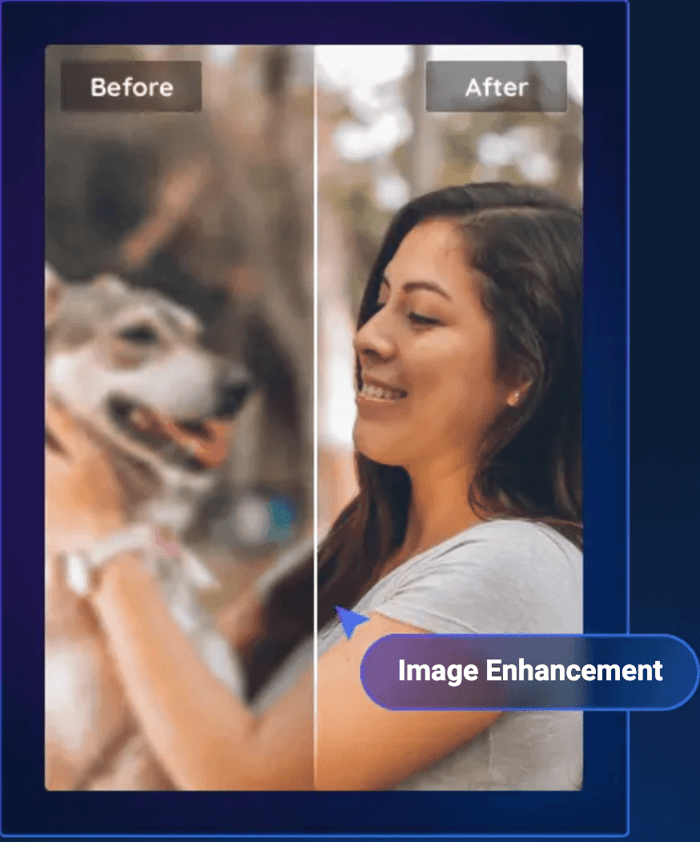
Popular tools in 2025 include:
Modelia: Best for creative professionals and brand consistency.
Topaz Labs: Focused on photography with impressive texture detail.
Let’s Enhance: Great for online sellers with e-commerce specific options.
Modelia stands out for its ability to preserve artistic nuance and style, something most general tools struggle with.
Real-World Applications and Modelia’s Role in Creative Enhancement
AI image upscaling has brought a profound transformation to a variety of industries, fundamentally changing how professionals and creators handle visual content. In the realm of e-commerce, for example, high-resolution product images can be the difference between a sale and a missed opportunity. Customers today expect clarity, color accuracy, and detailed visuals that mimic real-life inspection. By using AI-enhanced imagery, retailers are now able to present their products in sharp detail, leading to increased trust and significantly higher conversion rates.
Content creators, including bloggers, influencers, and digital publishers, have also seen immense benefits. What once required high-end cameras and expensive editing software can now be accomplished with the help of AI tools. These tools enable users to generate magazine-quality visuals from basic or compressed images. This democratization of quality empowers a broader range of creatives to compete on a professional level without the overhead traditionally associated with top-tier media production.
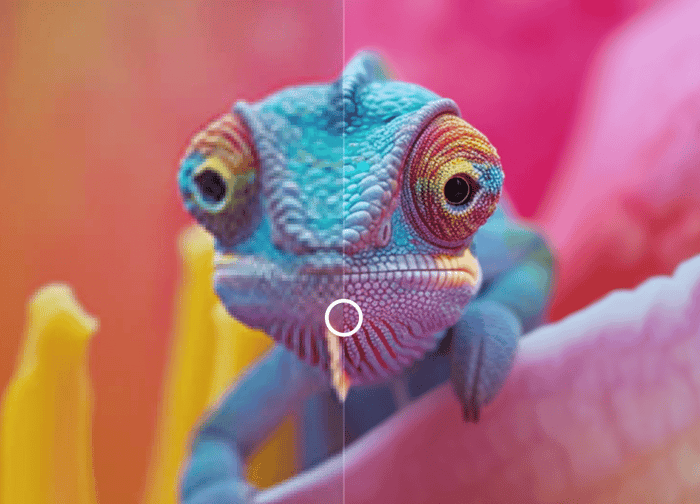
In photography and archival work, AI is revitalizing photo restoration. Old, faded, or damaged photographs, often limited by their original scan quality, can now be rejuvenated. AI upscaling algorithms bring out hidden textures and reconstruct areas lost to time or degradation, allowing families, historians, and museums to preserve precious visual histories in greater detail than ever before.
The marketing and branding sector has also embraced AI upscaling. Marketers can now take visuals created for small screens and repurpose them for large format advertising, such as billboards or HD displays, without compromising quality. This scalability of assets saves time and resources while ensuring brand consistency across platforms.
At the heart of these advancements is Modelia, a leading platform that merges technical precision with artistic awareness. What sets Modelia apart is its ability to deliver enhanced images that do not look artificially sharpened or digitally manipulated. Its AI algorithms are carefully trained to maintain natural tones, preserve subtle textures, and respect the original composition of the image.
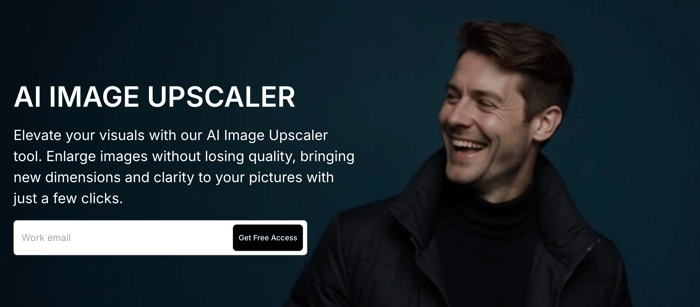
Modelia goes beyond basic enhancement. It interprets the creative context of an image, understanding whether the focus should be on mood, sharpness, emotion, or atmosphere, and applies enhancements that align with the creator’s vision. The result is not just a technically improved image, but a refined piece of content that resonates visually and emotionally with its intended audience.
Try Modelia and learn how to upscale images using AI
Best Practices, SEO Impacts, and the Future of AI in Imaging
To get the most out of AI upscaling:
Start with the highest quality source images possible.
Use tools that allow for preference customization (sharpening, denoising).
Don’t over-process, aim for enhancement, not distortion.
For consistent branding, use the same AI platform across projects.
From an SEO standpoint, high-resolution images reduce bounce rates and improve user engagement, particularly on mobile where crispness is critical. Search engines also prioritize visual rich content, especially when properly tagged and optimized.
Future trends include:
Real-time upscaling: AI enhancements applied instantly on mobile devices.
3D integration: AI-optimized visuals adapted for AR and VR.
Accessibility tools: Simple interfaces that help non-designers create professional-grade images.
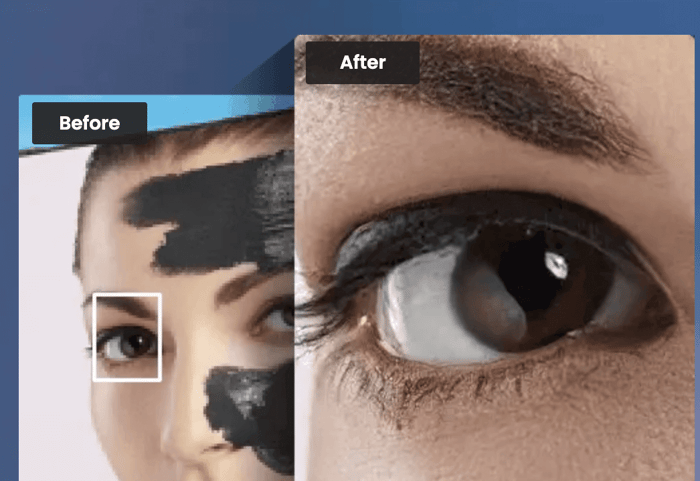
The Ultimate User Guide to Virtual Try-On Features: How to Get the Best Experience
Virtual try-on technology is transforming online shopping, letting you see how clothes, accessories, shoes, or makeup look before you buy. But to get the most out of it, there are tips and tricks that can enhance your experience. This guide will help you navigate virtual try-on tools like a pro.
What is Virtual Try-On?
Virtual try-on combines augmented reality (AR), artificial intelligence (AI), and sometimes 3D modeling to simulate products on a user. Whether it’s trying on a pair of glasses, a jacket, or a lipstick shade, virtual try-on creates a realistic preview without the need to visit a physical store.
How to Get Started
Choose the Right Platform
Not all virtual try-on tools are created equal. Look for platforms that support high-quality 3D models, accurate sizing, and realistic textures. Many fashion and beauty brands now integrate these features directly into their apps or websites.Provide Accurate Information
For clothing or shoes, entering your correct measurements ensures the virtual fit is realistic. For accessories like glasses or jewelry, provide your face shape or hand size if the tool allows.Use Proper Lighting
When using a live camera try-on, natural or well-lit rooms give more accurate previews of colors and textures. Avoid dark or overly bright environments.Experiment with Styles and Colors
Don’t hesitate to try multiple styles, sizes, and colors. Virtual try-on allows risk-free experimentation, helping you discover options you might not have considered.Rotate and Zoom
Take advantage of interactive features like rotation and zoom. Viewing items from multiple angles ensures you understand how they look in motion and from different perspectives.Compare with Real Products
Some platforms allow side-by-side comparisons or AR overlays on your existing wardrobe. This helps visualize how new items complement what you already own.
Tips for a Better Experience
Use the Latest App Version: Updates often improve accuracy, performance, and new features.
Check Reviews and Demos: Some tools offer sample try-ons or reviews that show real-life results.
Take Screenshots: Save your favorite looks for future reference or to share with friends before buying.
Combine with Size Recommendations: Some platforms pair virtual try-on with AI size suggestions for the best fit.
Benefits of Virtual Try-On
Confidence in Your Purchases: Reduce uncertainty about fit and style.
Saves Time and Hassle: No need for multiple store visits or returns.
Personalized Shopping: Try colors, styles, and accessories tailored to your preferences.
Eco-Friendly: Reduces returns and shipping waste, benefiting the environment.
Conclusion: Embrace the AI Advantage with Modelia
Now we've got a clear idea on how to upscale images using AI. Artificial intelligence has turned what was once a tedious, manual task into a fast, intelligent process. Whether you’re a freelancer, a brand manager, or a content creator, upscaling your images with AI can dramatically improve quality without wasting time or effort.
Modelia exemplifies the future of intelligent creative tools, ones that empower users to do more with less. It brings together the technical rigor of AI with the aesthetic needs of today’s digital landscape. If you want to stay ahead in the visual race, AI image enhancement isn’t optional, it’s essential.
Subscribe to Modelia's newsletter and keep updated in the latest news in AI fashion.
How would you rate this article:
Related Articles
- The Best Outdoor Clothing Brands for Every Adventure
- Top 5 Image Quality Enhancer to Sharpen & Improve Photos
- Wedding Dress Design: Inspiration & Sketch Ideas
- Best 7 Botika Alternatives You Should Check Out in 2025
- The Rise of AI-Generated Shoes in Modern Design
- Autumn Fashion Trends 2025: Key Styles & Outfit Ideas
- Best 5 AI Sketch to Image Tools to Bring Your Drawings to Life
- The Ultimate Guide to Dressing for Your Body Shape: Find the Best Clothing Styles
- How to Swap Faces in Photos with AI
- Modelia vs Botika: A Detailed Comparison for Ecommerce Businesses

